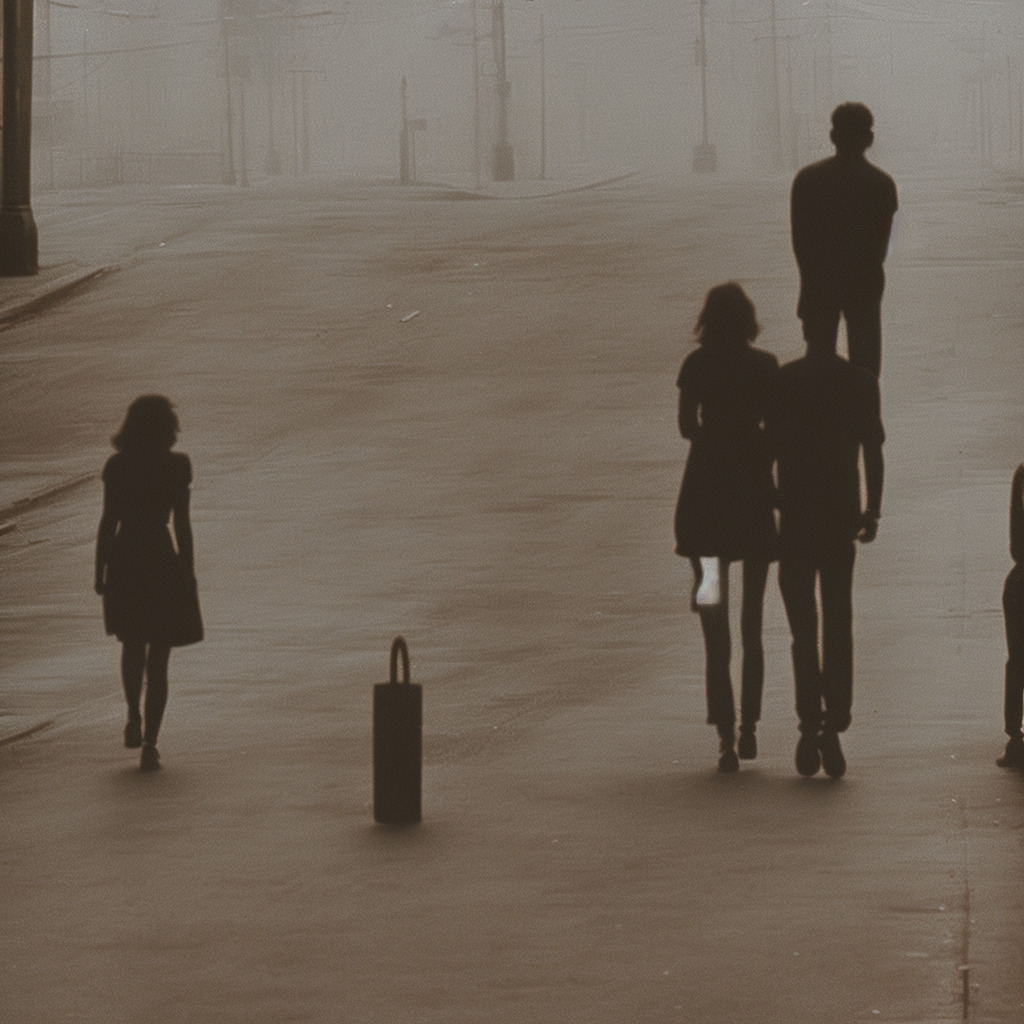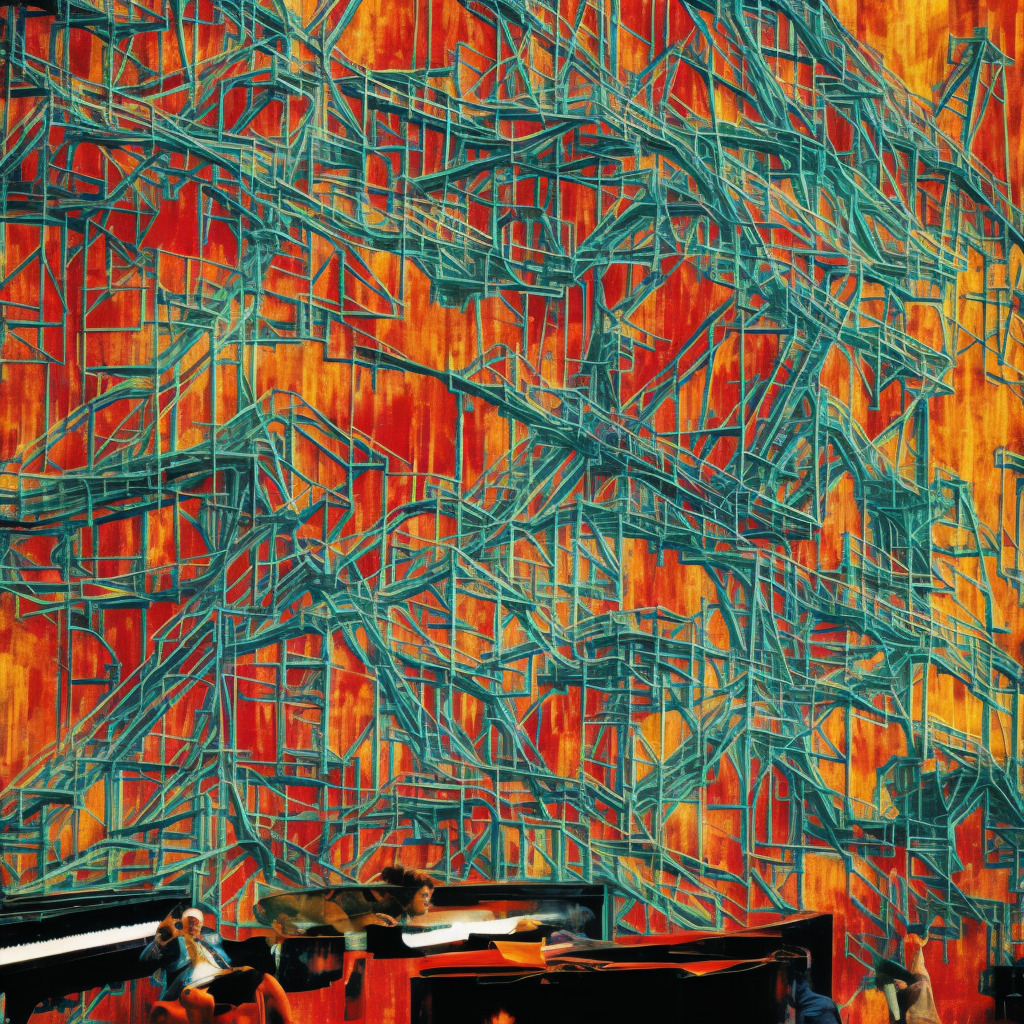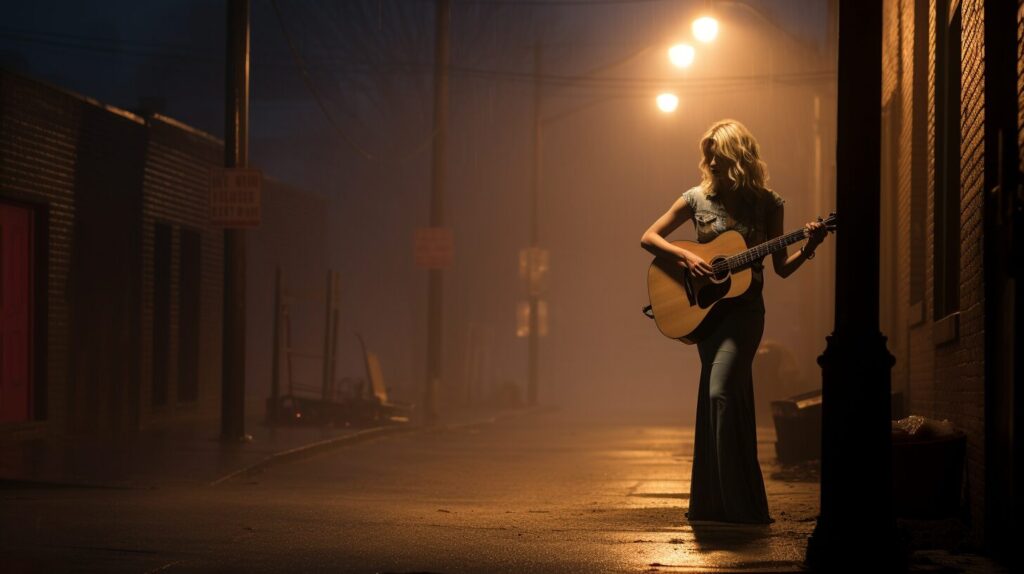🎶 Did you know “Missing” by #EverythingButTheGirl was originally a guitar-driven track? The iconic remix by Todd Terry made it a ’90s dance anthem! 💃🎸✨ #MusicTrivia #ThrowbackJams #MissingRemixed Read about it: tinyurl.com/24hmkac2
The Duo That Perfectly Captured the 90s Sound
“Relive the 90s with Everything But The Girl’s iconic fusion of pop, electronic, and heartfelt lyrics, as Tracey Thorn and Ben Watt continue to captivate and evolve, leaving a lasting impact on the music scene.”
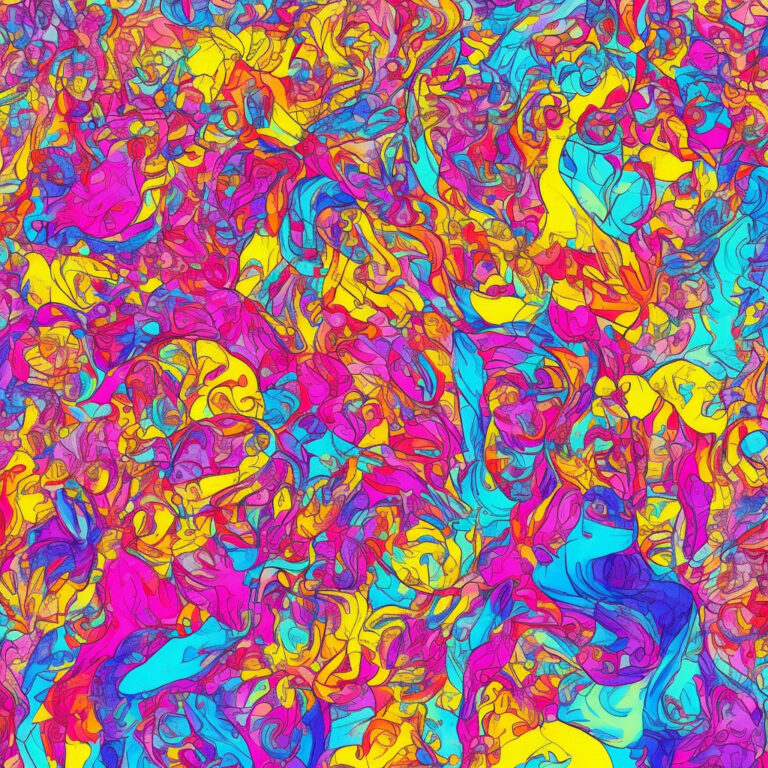
Everything But The Girl, an English musical duo formed in Hull in 1982, consists of Tracey Thorn and Ben Watt, who both have been consistently amazing throughout their musical journey. Their sound is an eclectic mix of pop, folk, jazz, and electronic music that has captivated audiences for decades. This dynamic duo has released nine studio albums, with their most commercially successful being 1994’s Amplified Heart, which features the iconic and unforgettable song “Missing.”
“Missing” is the epitome of 90s music, with its memorable chorus and a blend of pop, electronic, and dance elements. The song takes listeners on an emotional journey, reflecting on the feelings of loss, longing, and frustration. Watt’s production and Thorn’s hauntingly beautiful vocals create an atmosphere that resonates deeply with those who have ever experienced a difficult separation or heartache.
Over the years, Everything But The Girl has gone through various style transitions, but their commitment to delivering heartfelt and meaningful lyrics remains constant. Their earlier albums, such as Love Not Money (1985) and Baby, the Stars Shine Bright (1986), were characterized by a more folk and jazz-influenced sound, showcasing the duo’s musical versatility.
Tracey Thorn and Ben Watt have not only created a lasting impact as a duo but also individually. Thorn released three solo albums, while Watt pursued a successful career as a DJ, producer, and label owner. Additionally, Watt has written two critically acclaimed books, ‘Patient’ and ‘Romany and Tom,’ further showcasing his diverse range of talents.
Everything But The Girl has received numerous awards and accolades throughout their career. For instance, in 1996, their Todd Terry Club Mix of “Missing” was nominated for a Grammy Award for Best Remixed Recording. Moreover, Watt was awarded the prestigious ASCAP Award for his outstanding contribution to the music industry.
While Everything But The Girl has experienced tremendous success, some critics have argued that the duo’s move towards a more electronic sound in the late 90s, particularly on albums like Walking Wounded (1996) and Temperamental (1999), may have alienated some of their earlier fans. However, it is essential to acknowledge that such a long-standing career necessitates evolution and growth, and their ability to adapt to different musical styles ultimately highlights their brilliance as artists.
In conclusion, Everything But The Girl, with their evergreen song “Missing” and diverse discography, will continue to be a significant and influential band in the world of music. Tracey Thorn and Ben Watt have left an indelible mark in their respective fields and will always be remembered as the duo that perfectly captured the essence of the 90s.
Charting the Journey
“Missing”: A ’90s dance anthem that skyrocketed from modest beginnings to global chart success, forever cementing the powerful impact of Todd Terry’s iconic remix on pop culture.

“Missing” by Everything But The Girl proved to be a massive hit, both in terms of chart success and international recognition. Released on August 8, 1994, as part of the band’s eighth studio album, “Amplified Heart,” the song initially had a modest impact on the charts. However, its fortunes changed drastically with the release of the now-iconic Todd Terry Club Mix in 1995. This remix transformed the song into a dance anthem, propelling it to greater heights on music charts across the globe.
In the United States, “Missing” climbed to the lofty heights of #2 on the Billboard Hot 100 chart, where it remained for a consecutive three weeks in February 1996. It ultimately spent a total of 55 weeks on the chart, making it one of the longest-charting singles in the Hot 100’s history. Additionally, the song dominated the Billboard Hot Dance Club Play chart, reaching the #1 spot.
Across the pond in the United Kingdom, “Missing” peaked at #3 on the UK Singles Chart, spending a total of 17 weeks on the chart. In Europe, it reached the top 10 in several countries, including Germany, where it peaked at #4, and Sweden, where it climbed as high as #8. The song also proved to be a hit Down Under, reaching #8 in Australia and #4 in New Zealand.
“Missing” has also earned several accolades and milestones over the years. In 1996, it was the sixth best-selling single in the UK, with sales exceeding 850,000 copies. It became the duo’s highest-charting single in the US and their best-selling single in the UK. The song also garnered a nomination for Best Remixed Recording at the 1996 Grammy Awards, although it ultimately lost out to Madonna’s “Bedtime Story.”
Overall, “Missing” by Everything But The Girl emerged as one of the defining tracks of the 1990s, with the Todd Terry Club Mix catapulting the song into global chart success. Its undeniable influence on the dance music scene and its enduring popularity even today stand as a testament to the song’s impact on pop culture.
Unraveling the Emotional Tapestry of “Missing”
Step off the train all alone at dawn
Back into the hole where I was born
The sun in the sky never raised an eye to me
The blood on the trax and must be mine
The fool on the hill and I feel fine
Don’t look back cause you know what you might see
A look into the swim and oceans of me
You’ll be there throwing punchlines no one needs
Think I’m on a new world I just can’t reach
Tell me about the world you’re on
I just can’t breathe without you, I’m in heaven
I’m in heaven
I’m in heaven
I’m in heaven
Look up at the sky and I’m in heaven
I look up at the sky and I’m in heaven
Been walking in the rain until I’m done
Talking to myself and I’m in heaven
“Missing” by Everything But The Girl is a powerful song with deeply emotional lyrics. At first glance, the lyrics might seem to be about a lost love or a longing for connection. However, when we take a closer look, we can see that the song is a reflection of the era it was written in – the mid-1990s – and the various events that shaped that time.
The 1990s were a time of significant change in the world. The fall of the Berlin Wall and the end of the Cold War led to a new world order, and the rise of the internet marked the beginning of the digital age. As a result, people experienced a mix of emotions (fear, excitement, and uncertainty) as they faced the unknown future. The lyrics in “Missing” resonate with this tumultuous time, as they express a sense of longing and a search for identity.
When the lyricist sings, “A look into the swim and oceans of me / You’ll be there throwing punchlines no one needs,” it reflects the struggle for self-discovery and the desire for meaningful connections in a rapidly changing world. The line “Think I’m on a new world I just can’t reach” can be interpreted as the feeling of being out of touch with the world around us, while also expressing a longing to embrace these changes and be a part of the new world.
As the song progresses, the lyrics shift to a more hopeful tone with repeated mentions of being “in heaven.” This can be seen as a representation of finding solace and a sense of belonging in a world that seemed to be moving at breakneck speed.
Overall, the lyrics of “Missing” by Everything But The Girl not only tell a story of personal longing and connection but also paint a vivid picture of the emotional landscape of the era in which it was written. The song serves as a time capsule that captures the spirit of the 1990s, making it a powerful and enduring piece of musical history.
A Close Look at the “Missing” Music Video
Dive into the nostalgic 90s aesthetics of Everything But The Girl’s iconic “Missing” music video, capturing the essence of longing and loss amidst LA’s urban landscape.
The music video for the song “Missing” by Everything But The Girl is an archetypal example of 90s music video aesthetics. Directed by Mark Neale, the video was filmed in various locations around Los Angeles, California, in 1994. The choice of location is fitting, as the city’s vibe and atmosphere complement the melancholic undertones of the song.
In terms of production details, the “Missing” music video was shot on 16mm film, which lends a grainy and timeless quality to the visuals. The use of handheld cameras and natural lighting results in an intimate and almost voyeuristic experience for viewers, as they follow the band’s vocalist, Tracey Thorn, wandering through the streets of LA. The video also features glimpses of the city’s urban landscape, with shots of desolate highways, empty warehouses, and sun-drenched palm trees.
The artistic approach for the “Missing” music video mirrors the lyrics of the song, which are about the feelings of loneliness and longing. The video’s narrative revolves around Tracey Thorn’s search for a lost love, intercut with scenes of guitarist Ben Watt playing the song in an abandoned building. The sepia-toned color grading and slow-motion shots create a dreamy and nostalgic atmosphere, which adds to the overall theme of loss and yearning.
As for the budget, it is not publicly disclosed; however, the video’s stripped-down and minimalist style suggests that it was likely a modest production. Despite its simplicity, the “Missing” music video became iconic and is still remembered as one of the most captivating videos of the 90s.
In the absence of an official music video, fans have also contributed various visual interpretations of the song. YouTube is home to an array of fan-made videos and tributes to “Missing,” including lyric videos, live performances, and even choreographed dance routines. The widespread popularity of these alternative visual representations speaks to the enduring impact of Everything But The Girl’s classic hit.
The Mastermind Behind “Missing”: Ben Watt
The composer of the unforgettable song “Missing” by Everything But The Girl is none other than the talented Ben Watt. As one half of the dynamic duo, alongside Tracey Thorn, Ben Watt has not only composed various hits for the band, but he’s also branched out as a solo artist, producer, and even an author. Prior to the massive success of “Missing,” Watt had his hands in other notable songs like “Native Land” and “Each and Every One.” However, it’s worth mentioning Watt’s exceptional work as a remixer for high-profile artists such as Sade, Massive Attack, and Meshell Ndegeocello. His keen ear for blending genres and pushing sonic boundaries is a testament to his versatility and musical prowess.
Accolades, Appearances, and Cover Versions
“Missing”: A timeless classic soaring through charts, gracing screens, and inspiring covers, with its undeniable influence still resonating in today’s music scene.
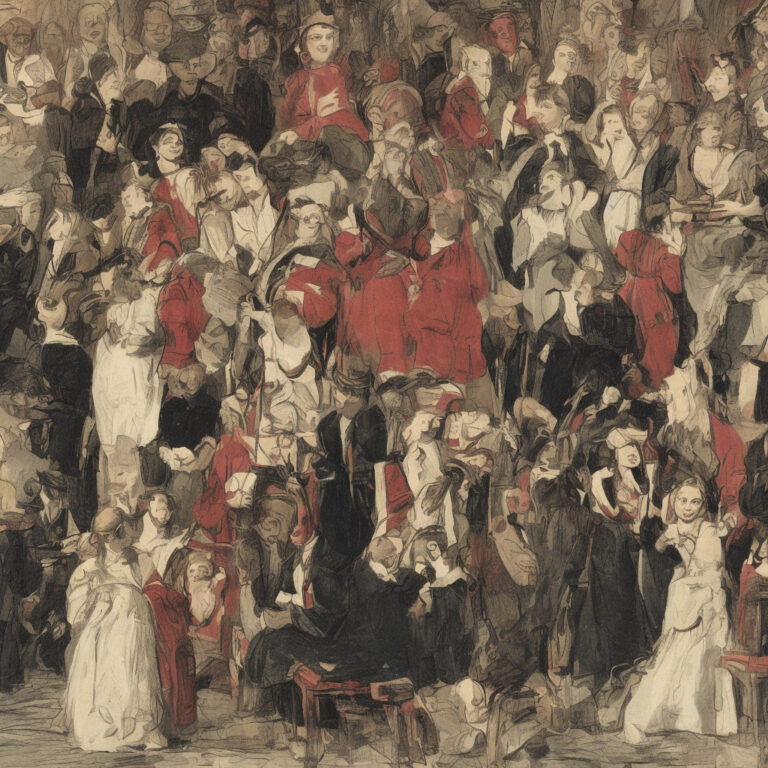
“Missing” has been widely recognized and celebrated over the years, receiving numerous accolades and awards that speak to the song’s enduring impact. In 1995, “Missing” climbed the charts, eventually reaching the number two spot on the Billboard Hot 100 in the United States, the number three spot on the UK Singles Chart, as well as attaining top ten positions in several other countries.
The song has also left its mark on popular culture, making appearances in various movies, TV shows, and video games. For instance, “Missing” was featured on the soundtrack of the 1996 film “The Long Kiss Goodnight,” starring Geena Davis and Samuel L. Jackson. Additionally, the song has been used in popular TV shows like “Charmed” and “Cold Case,” further solidifying its iconic status.
“Missing” has served as the inspiration for several cover versions over the years as well. One notable rendition is the 2007 cover by Austrian DJ and producer Klaas, who gave the track a fresh, electro-house spin. Another interesting take on the song comes from Andain, an American electronica duo, who released their version in 2008, exploring a trance-style approach. The wide array of artists and genres that have covered “Missing” is a testament to the song’s versatility and timeless appeal.
It’s worth noting that “Missing” has continued to make waves in the world of music, with the song being sampled and remixed by various DJs and producers, keeping its presence alive in club scenes around the globe. Its lasting impact on the music industry, as well as its enduring popularity, is evidence of the song’s undeniable influence and the resonance it still holds with listeners today.
Dissecting the Musical Elements
Diving into the technical aspects of “Missing,” one can’t help but appreciate the intricate musical structure that has made this song an enduring classic. The track is written in the key of A minor, giving it that melancholic and haunting quality that resonates with listeners. This key choice also provides a solid foundation for the emotive lyrics, allowing the vocals to shine through the mix. The chord progression follows a fairly simple pattern, but its effectiveness lies in its repetitiveness and consistency, creating an almost hypnotic effect.
The main chord progression of the song is Am – Dm – G – C – F – Dm – E, which is a staple in pop music. This progression is played throughout the song, with slight variations and embellishments to keep it interesting. The simplicity of the chord structure allows for a strong focus on the melody and lyrics, which is what has undoubtedly contributed to the song’s popularity.
“Missing” features a mid-tempo groove, clocking in at around 112 beats per minute (BPM). The tempo adds to the overall moodiness of the track, giving it a laid-back yet driving feel that perfectly complements the contemplative lyrics. The song features a 4/4 time signature, which is a common choice in popular music and contributes to the track’s accessibility.
One of the most notable aspects of the song’s production is the use of various electronic elements, such as synthesizers and drum machines. These elements create a rich sonic landscape that adds depth and texture to the track. The song starts with a minimalist approach, featuring just a simple beat and the main chord progression, before gradually building up to a lush and full arrangement. This build-up serves to enhance the emotional impact of the song, as it mirrors the increasing intensity of the lyrics and the vocalist’s performance.
The vocal performance on “Missing” is undoubtedly one of its standout elements. The singer’s delivery is both emotive and restrained, allowing the lyrics to take center stage. The vocal melody is simple yet memorable, with a haunting quality that stays with the listener long after the song has ended.
In conclusion, the enduring appeal of “Missing” can be attributed to its expert combination of a strong melodic structure, emotive lyrics, and a captivating vocal performance. The song’s musical elements work together seamlessly to create a moody and evocative atmosphere that has resonated with listeners for decades.

